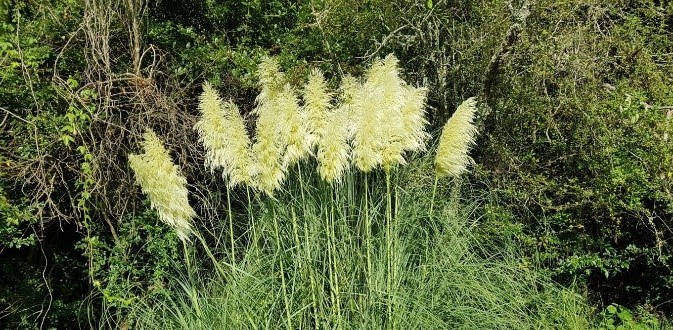Seen something unusual? MAKE A REPORT
Seen something unusual? MAKE A REPORT


Autumn is a good time to identify and remove harmful weeds remaining in orchard shelter belts, or any area adjacent to the orchard.
The flowerheads of the invasive South American pampas grass have just emerged (not to be confused with the native toetoe which flowered in October). Within another month or two, hundreds of fluffy seeds on each pampas flowerhead will be blown by the wind, ready to cling to Hayward fruit especially. Any pampas seed on fruit is a serious and significant reject factor – it is very difficult for the rollers to remove these seeds in the pack-house.
To remove pampas:
Another weed to look out for is moth plant. Spring is the best time to get rid of this vine from orchard shelter belts, however, if you have missed plants, they will likely have formed large seed pods by now. Try to remove these as they will split open in the winter, spilling their wind-borne seeds which can be blown for kilometres.
The pods can be hooked out of shelter trees by using an aluminium pole with a pruning saw clamped to the end. Bury the seed pods in a disposal pit (the seed will not yet be viable).
KVH investigates reports of unusual symptoms to identify and manage any biosecurity risks.
The KVH portal is now the Zespri Weather & Disease Portal. Access all the weather tools you're familiar with.
